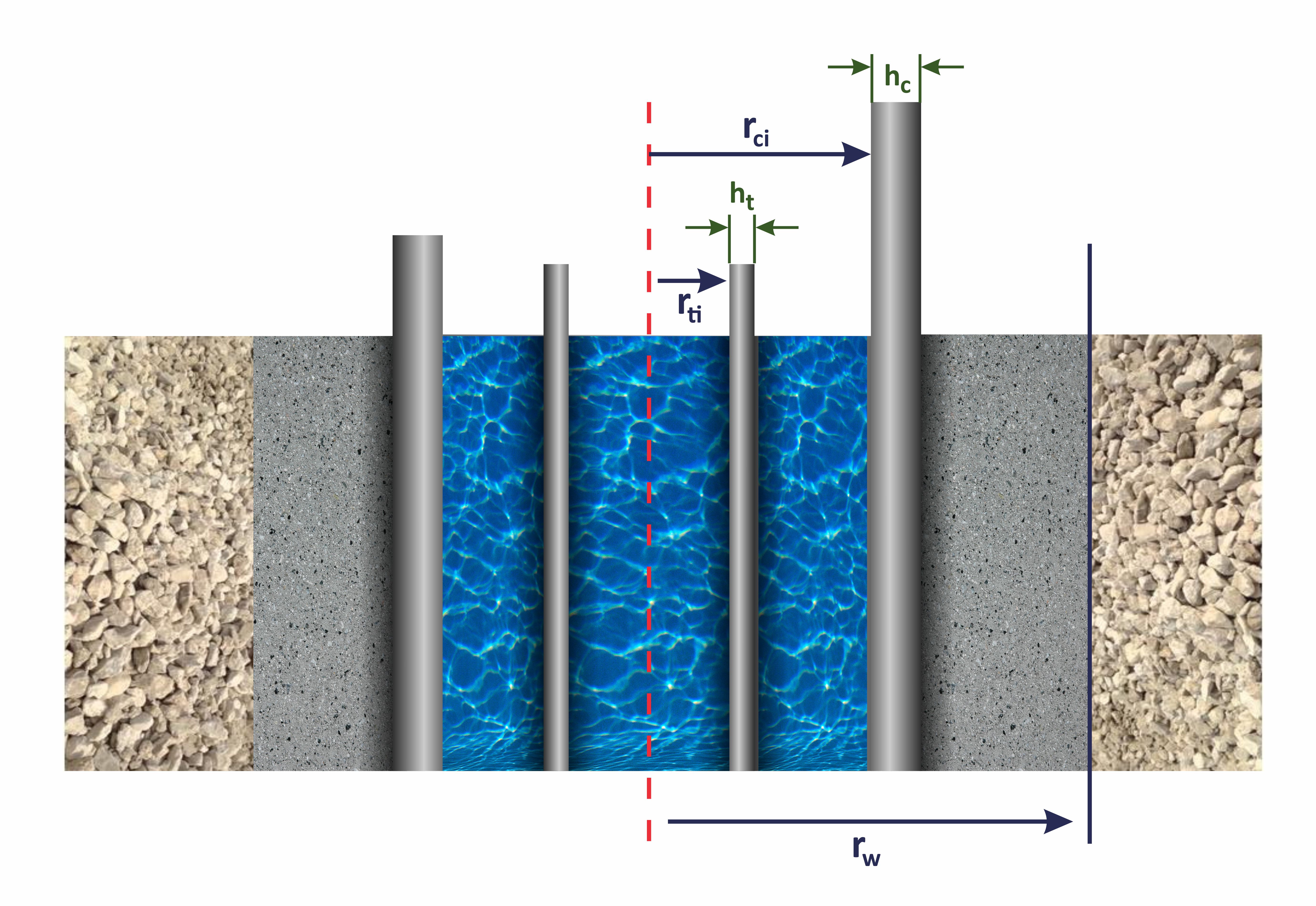In case of dual-barrier well completion with flowing fluid in the annulus (see Fig. 3) the HTC is defined by the following equation:
| (1) | \frac{1}{ d_{ti} \, U} = \frac{1}{d_{ti} \, U_{ti}} + \frac{1}{\lambda_t} \, \ln \frac{d_t}{d_{ti}} + + \frac{1}{\lambda_{a, \rm eff}} \ln \frac{d_{ci}}{d_t} + \frac{1}{\lambda_c} \ln \frac{d_c}{d_{ci}} + \frac{1}{\lambda_{cem}} \ln \frac{d_w}{d_c} |
where
d_t = 2 \cdot r_t | outer radius of tubing (with outer radius r_t) | |
d_{ti} = 2 \cdot r_{ti} | inner diameter of the tubing (with inner radius r_{ti}) | |
h_t = r_t - r_{ti} | tubing wall thickness | |
d_c = 2 \cdot r_c | outer radius of casing (with outer radius r_c) | |
d_{ci} = 2 \cdot r_{ci} | inner diameter of the casing (with inner radius r_{ci}) | |
h_c = r_c - r_i | casing wall thickness | |
\lambda_t | thermal conductivity of tubing material | |
\lambda | thermal conductivity of fluid moving through the tubing | |
\lambda_{a, \rm eff} = \lambda_a \cdot \epsilon_a | effective thermal conductivity of the annulus | |
\epsilon_a | Natural Convection Heat Transfer Multiplier | |
\lambda_a | thermal conductivity of fluid in the annulus | |
\displaystyle U_{ti} = \frac{\lambda}{d_{ti}} \, {\rm Nu}_{ti} | heat transfer coefficient (HTC) |
See also
Physics / Thermodynamics / Heat Transfer / Heat Transfer Coefficient (HTC) / Heat Transfer Coefficient (HTC) @model
